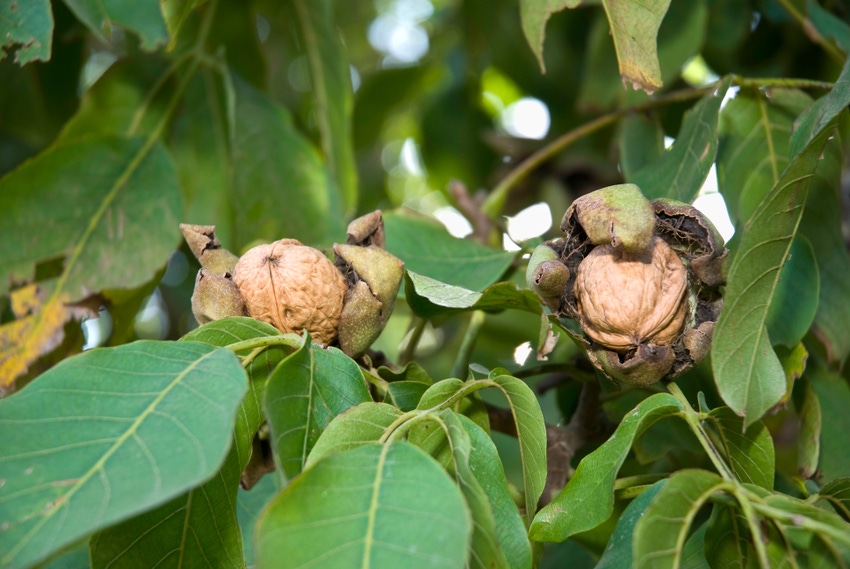August 31, 2016

The tree nut crop in California’s northern Sacramento Valley has been ripening early this season.
A heavy walnut crop is headed for a little earlier-than-usual start in early September.
That’s when growers will likely begin shaking Serr and other earlier-maturing walnut varieties. Harvesting of the region’s two most widely-planted varieties, Chandler and Howard, will follow several weeks later, reports Dani Lightle, University of California Cooperative Extension (UCCE) orchard systems advisor for Glenn, Butte, and Tehama counties.
Thanks to good winter rains which filled soil profiles following several years of drought, the 2016 walnut crop got off to a strong start. Hot weather in August helped speed it through the final stretch of the growing season.
“It’s a big crop this year,” Lightle says. “We’re seeing lots of doubles and triples in the trees along with a fair amount of limb breakage from the crop load in the Howards.”
Growers detected the walnut husk fly later than usual this season, she notes. This mid-to late-season pest poses a threat until the husk splits.
“Such a wide variability in populations highlights the importance of closely monitoring numbers in your own orchards,” Lightle says.
Getting a good handle on treating trees for coding moth has been a challenge for many growers in her area this season. The 1a and 1b codling moth flights were spread out more than usual, while the second flight appeared more bi-modal than is typically expected.
This made it difficult for the degree day models to track and predict the most effective time to make needed insecticide sprays for subsequent generations, and many growers needed to apply more codling moth sprays than usual, she explains.
Rains this spring increased the threat of walnut blight in walnut orchards.
“Overall, most growers in the north Sacramento Valley region did a really good job with blight management,” says Lightle.
By late August, she reports the southwest sides of a fair number of walnut trees in her area showed signs of sunburn – one of several factors which can reduce the quality and market value of walnuts.
“In view of the prospects for a large crop this year and the lower prices for walnuts than in recent years, the quality of this year’s crop is a big concern,” she says. “We’ll be keeping a close eye on it.”
In the July 2016 issue of the Orchard Facts newsletter, Rick Buchner, UCCE farm advisor for Tehama, Glenn, and Butte counties, described steps growers can take during the growing season to maximize walnut quality.
These steps include:
Minimize stress on trees from either over- or under-irrigating, which can lead to less desirable and lower quality darker kernels by using soil moisture sensors and pressure chambers to guide water management decisions.
Control insects including codling moth and Navel orangeworm which feed on kernels and provide entry points for other damage, plus the walnut husk fly which can cause shriveled and darkened kernels, encourage mold growth, and stain the shells.
By feeding on leaves, spider mites can defoliate trees early in the season to greatly reduce nut yield and quality, and late in the season which interferes with harvest. Meanwhile, aphid feeding can reduce tree vigor, nut size, yield and quality, and excrete honeydew which can lead to sooty mold on the husk, and increase the risk of sunburn.
Minimize mold damage caused by various fungi by preventing pre-harvest hull damage and moisture stress, plus quickly picking up, hulling, and drying nuts after shaking from the tree.
You May Also Like




